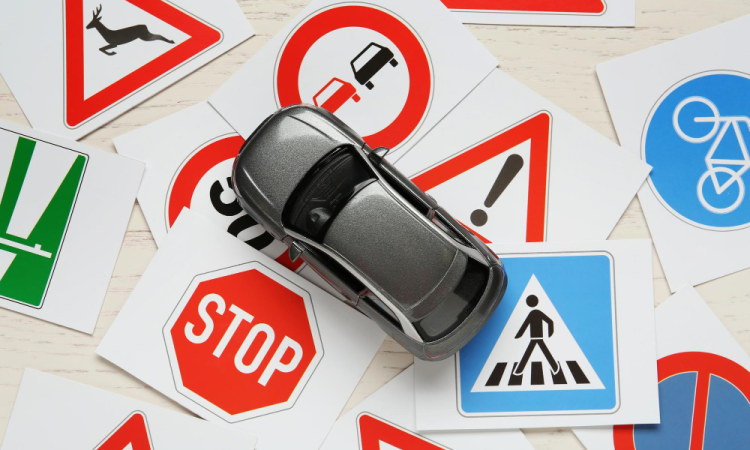
Understanding traffic signs in India is crucial for anyone aspiring to obtain a driving licence. These signs, which include various symbols, signals, and markings, are designed to regulate and control traffic, ensuring safety on the roads. For driving licence applicants, a thorough knowledge of these signs is essential, as they form a significant part of the licensing process. This article explores the different types of traffic signs in India and their impact on driving licence applicants, guiding readers through the importance of mastering these signs.
The importance of traffic signs in India for driving licence applicants
Traffic signs in India play a pivotal role in maintaining order and safety on the roads. They provide vital information to drivers, helping them navigate and react appropriately to different situations. For driving licence applicants, understanding these signs is not only necessary for passing the written test but also for practical driving skills. Familiarity with traffic signs ensures that new drivers can interpret and respond to various road conditions and regulations.
Key traffic signs in India
Mandatory signs
These signs indicate rules that drivers must follow. Examples include ‘Stop’, ‘No Entry’, ‘One Way’, and ‘Speed Limit’ signs. They are usually circular with a red border.
Cautionary signs
These signs warn drivers about potential hazards ahead. Examples include ‘Sharp Turn’, ‘Pedestrian Crossing’, ‘School Zone’, and ‘Bump Ahead’ signs. They are typically triangular with a red border.
Informative signs
These signs provide useful information to drivers, such as directions, distances, and facility locations. Examples include ‘Hospital Ahead’, ‘Fuel Station’, and ‘Parking’ signs. They are usually rectangular or square.
| Type of Traffic Sign | Description | Example Signs |
| Mandatory signs | Indicate the rules and regulations that must be followed | Stop, No Entry, One Way, Speed Limit |
| Cautionary signs | Warn about potential hazards and road conditions | Sharp Turn, Pedestrian Crossing, School Zone |
| Informative signs | Provide information about directions, distances, etc. | Hospital Ahead, Fuel Station, and Parking |
Steps for driving licence applicants to master traffic signs
Study the traffic signs handbook:
Obtain a comprehensive handbook or guide book that covers all the traffic signs in India. The Regional Transport Office (RTO) provides these materials, and they are also available online.
Attend driving school:
Enroll in a certified driving school where instructors will teach you about various traffic signs and their meanings. Practical lessons will help reinforce this knowledge.
Take practice tests:
Use online platforms and mobile applications to take practice tests on traffic signs. This will help you become familiar with the format of the driving licence test and identify areas where you need improvement.
Observe signs on the road:
While practising driving, pay close attention to traffic signs and how they are used in real-life scenarios. This will help you understand their practical applications and improve your reaction time.
Revise regularly:
Regular revision is crucial to ensuring that you retain knowledge of traffic signs. Make it a habit to review the signs periodically until you feel confident about them.
How do traffic signs impact the driving licence test?
The driving licence test in India comprises two main parts: the written test and the practical driving test. Traffic signs significantly impact both of these components.
Written test:
- The written test includes multiple-choice questions about traffic signs and their meanings.
- Applicants must correctly identify and understand the purpose of various traffic signs to pass this test.
- A strong grasp of traffic signs is essential to scoring well and advancing to the practical test.
Practical driving test:
- During the practical test, examiners assess how well applicants can interpret and follow traffic signs on the road.
- Proper adherence to traffic signs is crucial for demonstrating safe and responsible driving behaviour.
- Applicants who fail to comply with traffic signs or show inadequate knowledge may be disqualified.
Conclusion
Traffic signs in India are a fundamental aspect of road safety and traffic management. For driving licence applicants, mastering these signs is essential for both the written and practical tests. Understanding and correctly interpreting traffic signs ensures that new drivers can navigate roads safely and responsibly. By following the steps outlined above, applicants can enhance their knowledge and confidence, increasing their chances of successfully obtaining a driving licence. Prioritising traffic sign education will not only help in passing the tests but also contribute to safer driving practices on Indian roads.